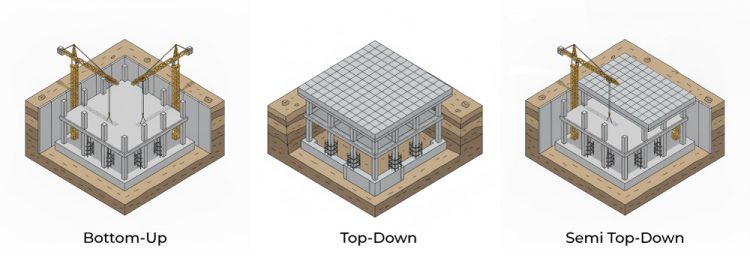Excavation Methods: Top-Down, Bottom-Up, and Semi Top-Down


Efficient excavation is essential to ensure safety, cost control, and project timelines — especially for deep basements and high-rise developments. The Bottom-Up method, the most traditional approach, begins by excavating to the foundation level before constructing upwards. It offers flexibility but requires open space and can cause surface disruption.
In contrast, the Top-Down method allows basement and superstructure works to proceed simultaneously. Permanent slabs are cast at ground and intermediate levels early in the process, providing structural support for excavation below. This technique is ideal for tight urban sites, minimizing ground movement, noise, and dust while accelerating project delivery.
The Semi Top-Down method blends both approaches: initial basement levels are constructed using the top-down sequence, while lower levels follow bottom-up excavation. It’s a practical balance between speed and cost efficiency, commonly adopted for mid-depth basements.
Choosing the right method depends on factors such as soil conditions, site constraints, construction sequence, and project scale — all of which influence overall feasibility and performance.
